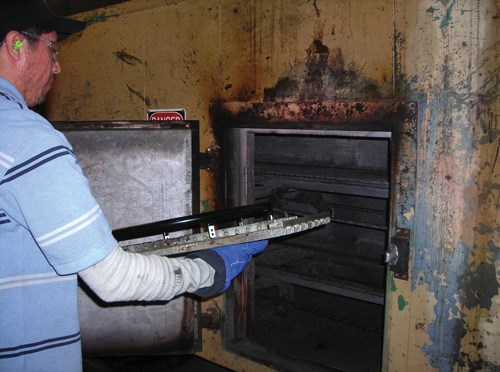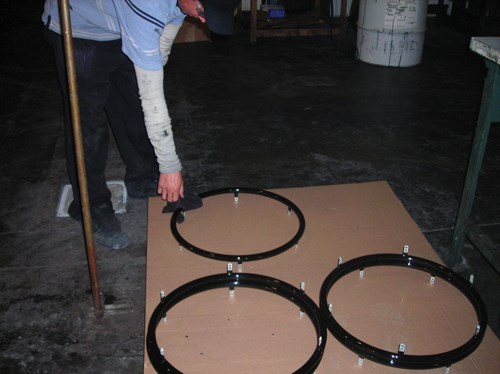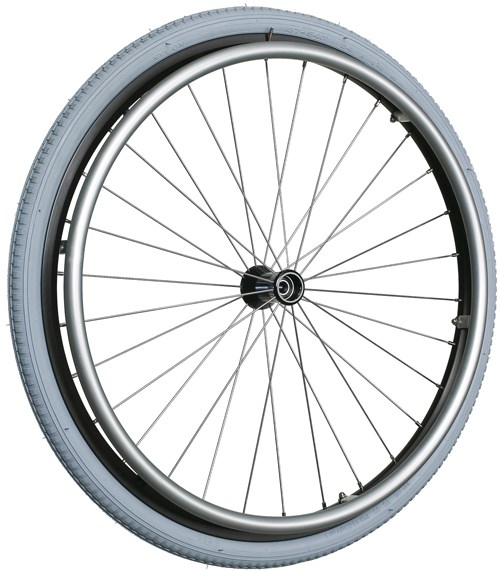A Dip in the Coatings Pool for Durability
OEMs turn to dip coating for products both large and small.
#curing
For some 20 years, Sunshine U-LOK owner Doug Devine had been searching for a coater that could handle the kind of volume and quality required to service cities and colleges with his company’s 5-ft-long, dip-coated bicycle racks.
It wasn’t until the summer of 2011 when Devine’s son, Sunshine U-LOK manager Christian, discovered a company called Molded Devices that promised to solve their problem.
Featured Content
“I told Molded Devices that we were looking for additional capability to build larger inventories,” says Devine, whose company is located in Westlake Village, Calif. “They immediately expressed an interest, even though, at the time, it meant investing in constructing tanks and ovens large enough to do the work.”
Founded in 1963, Molded Devices of Riverside, Calif., offers dip coating and molding, fluidized bed powder coating, and custom injection molding in several facilities throughout the U.S.
Expanding Capabilities
To work on the Sunshine U-LOK project, Molded Devices expanded its production area, and it currently is one of the only dip coating manufacturers in the U.S. that can coat parts as large as 55 × 55 × 8 inches.
“MDI prides itself on being agile and flexible when it comes to meeting the needs of our customers,” says Chuck Brider, the company’s operations manager. “When an opportunity presents itself, such as in the case of Sunshine U-LOK, we want to be able to make the necessary decisions that will allow for the best outcome for all parties. In this case, we rearranged our shop floor and made room for the acquisition of larger ovens and dip tanks.”
Although dip coating has been around for decades, many OEMs are unaware of the full scope of its capabilities and possibilities, Brider says. The dip coating process, where parts are dipped into a polymer such as plastisol, is known to deliver non-slip, cushioned gripping surfaces to products; protect against abrasion and corrosion; provide electrical insulation; and enhance a product’s appearance for sales appeal.
The most identifiable application of dip coating is for the grips on many hardware-store tools, but it also has been used for products ranging from toys and fitness equipment to outdoor furniture and municipal bike racks.
“Dip coating can be used to deliver just about any coating color imaginable and a variety of hardness profiles, from relatively soft to hard, along with properties such as temperature resistance, static dissipation and UV protection,” Brider says.
Dip Coating Process
In the dip coating process, parts are typically arranged on a handling rack and then lowered into a tank of plastisol for a specified time, then cured in large ovens, dip-quenched and removed from the holding frame.
Brider says plastisol heads the list of dip-moldable materials because of its long history of success, ease of processing, affordability and prevalence in the industry. It is liquid at room temperature and, once exposed to a certain elevated temperature, gels and remains a solid ranginge in hardness from 33 (softest) to 96 (hardest) Shore A scale durometer.
Plastisol also is available to match color, hardness, finish and properties such as high- and low-temperature resistance, static dissipation and UV protection, Brider says. Although plastisol is the most common dip coating material, latex, neoprene, urethane and other materials can be used instead.
Size Not the Only Issue
When it came to the Sunshine U-LOK bike racks, size of the parts to be coated was not the only issue. Devine wanted more color choices that might compliment municipal, corporate and campus architectural designs. Basic gray or black was not aesthetically pleasing in every environment.
According to Devine, Molded Devices ran a dozen color samples, and he ultimately selected six.
“In the past, many customers would ask for specific colors, so we anticipate this will bring us more business,” he says.
Once the company received its first shipment of dip-coated bike racks in September 2011, Sunshine U-LOK quickly increased its inventory, and sales have been brisk. The productivity upgrade is due in part to Molded Devices’ ability to hold to schedule and meet deadlines.
“They bent over backwards to support our vision,” Devine says. “Their professionalism and quality control has been very impressive. Today, we have 10 times the product we had before, and the quality and look of our bike racks is so much better.”
Customers are happy, too. Last year the city of Santa Monica, Calif., acquired 500 bike racks in a variety of styles, the largest number Sunshine U-LOK has ever installed in an American municipality. In the past, city maintenance workers would have to re-paint the traditional steel, powder- coated bike racks three or four times a year, Devine says. Now the crew simply wipes down the Sunshine U-LOK dip-coated racks with a cotton cloth and cleaning fluid.
Devine is so confident in dip coating that Sunshine U-LOK offers its customers a 10-year guarantee on the finish of its bike racks.
Wheelchair Pushrims
Dip coating is also being used by Spinergy, a Carlsbad, Calif., company that designs, manufactures and markets aerodynamic wheels for road, triathlon and mountain bikes, as well as high-performance wheels for wheelchairs. The construction of a wheelchair wheel involves a pushrim, an outer ring used by the operator to turn the wheels without having to put his or her hands directly on the tire.
Henry Mathers, chief financial officer of Spinergy, says there are many variations of pushrim design within the industry. Most wheels are offered with an aluminum pushrim, but for those individuals that need a little more grip, the company offers a pushrim that is coasted with plastisol. Spinergy constructs the pushrim using an aluminum ring dip that is then sent to Molded Devices and dip coated in plastisol. It provides the proper grip for the user without hindering the operation of the wheelchair or irritating the operator’s hands, Mathers says. This is even more critical for those that lack hand strength or have a loss in hand function.
“MDI provides us with a consistent product that does not vary from the original specifications,” he says. “They are able to hold a consistent level of tackiness and durability of material. They also take great care to ensure proper bonding of the vinyl material to the aluminum substrate and have always been very consistent in that regard.”
Mathers says that this was a key requirement because, “if the underlying prep work is not done properly, the overall durability of the wheel would be greatly reduced.”
In addition to dip coating, Molded Devices offers assembly, printing and decorating, piercing, slitting, die cutting, and packaging, Brider says. For Spinergy, packaging was important, because vinyl-coated pushrims can easily get scuffed or scratched, a factor that doesn’t affect the wheel’s functionality but could affect a customer’s perception of the product.
“When you sell any product to a consumer, you want it to look pristine when it comes out of the box, even if five minutes later it won’t look pristine,” Mathers says. “So MDI developed a method of packaging to ensure there would be no cosmetic damage during transportation or shipping.” n
For more info about Molded Devices Inc., call 951-531-4872 or visit MoldedDevices.com.
RELATED CONTENT
-
Painting a Boeing 737: See The Video
The cost is between $100,000 to $200,000 to prep and paint each plane, depending on which colors are chosen, and how many colors.
-
Curing Oven Basics
Simply heating up the substrate does not cure the coating. There are many variables to consider when choosing the best cure oven for your application...
-
Preventing Solvent Pop
Preventing solvent pop on an industrial paint line...






















